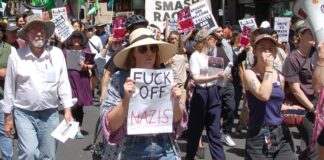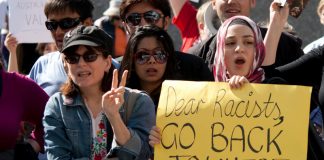Mark Gillespie explains how Sri Lankan socialists capitulated to the vicious racism and pogroms against Tamils that led to the ethnic cleansing of today
For more than 25 years Sri Lanka was torn apart by a disastrous ethnic civil war. The war ended in 2009 but the ethnic divisions remain entrenched, with the Tamil minority under the heel of a Sinhalese supremacist regime. But the polarisation of Sri Lanka along ethnic lines wasn’t inevitable.
These divisions are not the result of some “age old differences” but are a legacy of British colonial rule.
Unlike the previous colonisers, the Portuguese and the Dutch, the British overran the whole island in 1815 (then called Ceylon) and established a plantation economy in the central highlands. Tens of thousands of Buddhist Sinhalese peasants were dispossessed in the process.
Tamils from India were then recruited to labour in these plantations in virtual slave conditions. The dispossessed Sinhalese, nonetheless, saw these Tamils as part of the problem.
The recruitment of predominately Sri Lankan Tamils into the colonial bureaucracy created another layer of resentment. The Sri Lankan Tamils had lived in the north and east of the island for thousands of years and, like the Indian Tamils, were predominately Hindu.
Despite the deliberate divide and rule tactics, ethnic violence was a relatively minor feature of politics before independence. The first post-independence government in 1948 was an alliance between the conservative United National Party (UNP) and the conservative Tamil Congress.
Both parties looked to a pan-ethnic Ceylonese nationalism to unite the country and both targeted the socialist left as the main threat. The UNP produced a poster during the 1947 election appealing to all religions for support against the godless left.
The race card
Ethnic nationalism first raised its ugly head as part of an attack on the socialist left. The left had strong support amongst the Indian Tamil plantation workers whom they helped organise and in the 1947 election had won over 20 per cent of the vote.
The new UNP led government attacked their support base by enacting new citizenship laws that stripped close to a million Indian Tamils, 11 per cent of the population, of their voting rights.
But even this crude measure didn’t totally polarise the country along ethnic lines. The elitist Tamil Congress, whose electoral support came from predominantly Sri Lankan Tamils, only opposed the disenfranchisement half-heartedly and remained as part of the government. In fact it was predominately Sinhalese politicians from the left that led the opposition in the parliament.
But the 1950s produced a serious escalation in the nationalist and chauvinist agitation.
Unlike in India and Burma there was no significant struggle for independence in Sri Lanka, which received independence as part of Britain’s general withdrawal from South Asia. Consequently the parties that dominated post-independence politics were the parties of the Sinhalese, Tamil and Muslim elites that had collaborated with the British. Under their rule very little changed.
This didn’t satisfy the aspiring Sinhalese middle classes and in 1951 Solomon Banaranaike split from the UNP to form the Sri Lankan Freedom Party (SLFP). The SLFP was less tied to the West in foreign policy—even calling itself “socialist”—and initially looked to state intervention to develop the economy and provide jobs for the Sinhalese middle classes.
But its strategy for winning votes was to ramp up Sinhalese nationalism. The Sinhalese were 70 per cent of the population and Banaranaike appealed to them by attacking the Tamil minority whom he labelled as “alien” and “privileged” agents of a foreign power (India).
The SLFP’s growth was initially slow, but in the lead up to the 1956 election they launched a demand that “Sinhala only” become the official language of government. English had been the language of government prior to independence but only 3 per cent of the population spoke it. A consensus had existed that English would be replaced by both Sinhala and Tamil.
But making Sinhala the language of government gave the Sinhalese middle classes advantages in employment and education. They rallied around the slogan and carried this nationalistic message deep into the Sinhalese working class and peasantry.
The SLFP won the 1956 election but the UNP weren’t about to be out done. By 1957 were organising their own nationalistic marches against the SLFP for daring to agree to a “reasonable use” of Tamil. There has been a downward spiral ever since.
The left alternative
As Sri Lankan society polarised along ethnic lines, the socialist left could have fought the racism through uniting Tamil and Sinhalese workers in defence of their common class interests. They were in a good position to do so with real influence inside trade unions and a record of leading struggles. Unfortunately they failed the test.
The socialist left consisted of two Trotskyist parties that had temporarily split, the Lanka Sama Samaja Party (LSSP) and the Bolshevik Samasamajas Party (BSP).
Sri Lanka was one of the few countries in the world where Trotskyist parties had a mass following. The LSSP won ten seats during the 1947 election and was the largest opposition party. The BSP won another five seats and there was also a Stalinist Communist Party (CP) which won three seats.
While the disenfranchisement of the Tamil plantation workers was a blow to the socialist left, it was not fatal.
In 1953 the socialist parties were strong enough to initiate a general strike (the Hartal) that reached insurrectionary proportions in places and forced unpopular subsidy cuts to be withdrawn and the UNP Prime Minister, Dudley Senanayake, to resign.
Predominantly Sinhalese workers in the south west were at the heart of this movement but workers from all religions and ethnic groups rallied to the cause, including Tamils in the Jaffna region.
This general strike showed the potential for the politics of class struggle to trump the politics of ethnic division. It demonstrated the possibility of uniting Tamil, Sinhalese and all Sri Lankan workers to defend living standards and demand the redistribution of the country’s wealth.
But increasingly the socialist left parties were being seduced by parliament and the unprincipled politics and alliances that came with it.
While they opposed the “Sinhala Only” Act, they failed to call demonstrations and strikes against the policy, and even maintained an electoral non-aggression pact with the same party, the SLFP, that had launched the racist agitation.
The extent to which they’d been dazzled by parliament was revealed in 1964 when the LSSP agreed to join a collapsing SLFP government after receiving three ministries.
Taking part in a government responsible for managing capitalism like this was a fundamental break with Marxist principles for which they were expelled from the Trotskyist Fourth International.
This parliamentary alliance was short lived but deeply corrupting. In opposition the LSSP now began joining SLFP-led nationalist agitation against concessions to Tamil autonomy. Then in 1970 the LSSP and the CP entered a formal alliance with the SLFP and were soon swept into power in a massive landslide.
The alliance proclaimed itself a “people’s government”. But Tamils and other minorities were excluded as the new government amended the constitution to enshrine Buddhist supremacy. New policies of “standardisation” in higher education blatantly discriminated against Tamils.
The left also failed Sinhalese workers. The massive euphoria that greeted the 1970 election victory soon turned into despair as the “people’s government” attempted to manage the economy through a global economic downturn. Unemployment and inflation climbed as rice subsidies were cut and disillusioned workers turned on the government.
In the election that followed the left lost all its parliamentary seats.
Separatism and armed struggle
While the two major capitalist parties banged the Sinhalese nationalist drum and the socialist parties failed to offer an alternative, the Tamil minority were pushed towards separatism and armed struggle.
The Federal Party’s argument that “Tamil Ceylon must govern itself” only became dominant among Tamils in response to the push for “Sinhala only” as the official language.
It initially looked to Mahatma Gandhi’s non-violent methods to achieve Tamil autonomy. But their non-violent demonstrations were brutally attacked by nationalist mobs urged on by government ministers.
It wasn’t until 1977, when 300 people were killed in anti-Tamil riots, that Tamil youth began looking to armed resistance. And it wasn’t until 1983, after more than 3000 were killed in government orchestrated attacks, that full scale civil war broke out.
The Tamil Tigers came to dominate the armed resistance, but their strategy was deeply flawed. Tamils living outside of the Tamil homeland areas were excluded by their plans for an independent state. Their military strategy invariably led to innocent Sinhalese being killed, which only pushed Sinhalese workers deeper into the arms of the bigots.
Lessons
Sri Lanka’s civil war was a tragedy for the Tamil minority but there were no gains for Sinhalese workers. Many lives were lost, public finances were squandered, and the state became increasingly authoritarian under the banner of fighting terrorism.
Meanwhile both major parties embraced neo-liberalism and opened up the economy to market forces, creating extreme income inequality. But any struggle against rising inequality was constantly sidelined by the ethnic conflict.
Sinhalese nationalism is now much more entrenched amongst Sinhalese workers as a

result of the socialist parties’ failure to consistently combat it. Even Sri Lanka’s largest left party today, the Janatha Vimukhti Peramuna (JVP), has thoroughly embraced Sinhalese nationalism. In 2004 it led a nationalist campaign against a UNP negotiated ceasefire with the Tamil Tigers.
Sri Lanka demonstrates the danger if the left fails to stand up to racism.
As Labor and the Liberals in Australia disgrace themselves in trying to out do each other in bashing refugees; and the unions target foreign workers on 457 visas; these are important lessons to learn from the tragedy.





